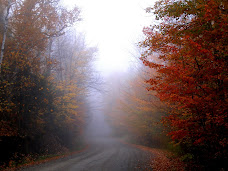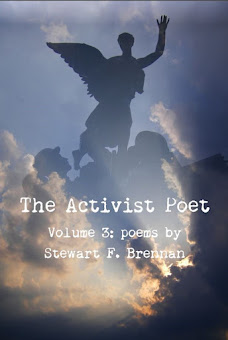
Source: Al Jazeera
http://english.aljazeera.net/news/americas/2010/02/20102285432775220.html
Two million people have been affected by the massive earthquake that struck central Chile, Michelle Bachelet, the outgoing president, has said.
One of the world's most powerful earthquakes in a century rocked the nation early on Saturday, killing more than 300 people as it toppled buildings and triggered tsunami warnings across the Pacific Ocean.
Chileans fearful of aftershocks camped outside on Sunday in towns shattered by the earthquake, as officials struggled to grasp the scale of the damage to the country's transport, energy and housing infrastructure.
The 8.8-magnitude earthquaketriggered a tsunami that killed at least four people on Chile's Juan Fernandez islands and caused serious damage to the port town of Talcahuano.
In a national address on television, Bachelet said 1.5 million people had been affected by the earthquake, while officials in her administration said 500,000 homes were severely damaged.
Residents Ttrapped
Meanwhile, at least 100 people were feared trapped inside the rubble of a collapsed building in Concepcion more than 34 hours after the quake struck.
Firefighters and rescue workers used drills and shovels on Sunday to search for survivors amidst the rubble.
"Time is of the essence to save the people inside this building," Jacqueline van Rysselberghe, the city's mayor, said.
Van Rysselberghe also criticised the national government for what she said was a slow response to the quake.
"It's a shame that rescue teams could not come to Concepcion yesterday."
Hours after the earthquake, smaller-than-expected tsunami waves hit Hawaii and the US Pacific Coast. There were no immediate reports of damage and a tsunami warning for Hawaii was soon lifted.
Kevin McCue, president of the Australian Earthquake Engineering Society, told Al Jazeera: "I'm surprised it produced such a small tsunami as a result. But everyone is still on alert right across the Pacific."
Japan issued a warning on Sunday for a tsunami of 10ft or higher and advised coastal residents to evacuate to higher ground.
Daunting Task
Bachelet has declared a "state of catastrophe",saying that officials were still trying to evaluate the "enormous quantity of damage."
The earthquake has raised a daunting first challenge for Sebastian Pinera, who was elected Chile's president in January and who takes office in two weeks.
"Unfortunately, Chile is a country of catastrophes," Pinera said.
He said the disaster heavily damaged many of the country's roads, airports and ports.
At least 214 people were killed and 15 were missing as of Saturday evening.
While that remained the official estimate, Carmen Fernandez, head of the National Emergency Agency, said later: "We think the real figure tops 300. And we believe this will continue to grow."
Local radio reported 100 people were missing in a collapsed building in Concepcion, one of Chile's largest cities with around 670,000 inhabitants.
Aid organisations and government officials in Britain and the US have offered to help Chileans in their efforts to rebuild their country.
Barack Obama, the US president, has said the US has resources in position to deploy should the Chilean government ask for help following the earthquake.
Buildings Ablaze
Firefighters rushed to put out fires, and most of the buildings in the city centre were destroyed.
Chilean TV showed images of collapsed homes in Concepcion, a large building completely engulfed in flames and injured people lying in the streets or on stretchers.
Some residents looted pharmacies and a collapsed grain silo, hauling off bags of wheat, television images showed.
More than 200 inmates in a prison near Concepcion escaped when walls crumbled, Terra Networks reported.
It also reported that phone lines were either down or busy, making confirmation of damage difficult elsewhere, especially further south towards the epicentre.
The US Geological Survey (USGS) said the earthquake struck 92km northeast of Concepcion at a depth of 63km at 3:34am local time (06:43 GMT) on Saturday.
The earthquake shook buildings in Buenos Aires, Argentina's capital, and was felt as far away as Sao Paulo in Brazil - 1,800 miles to the east.
Dozens of Aftershocks
In the capital of Santiago, 320km northeast of the epicentre, three hospitals collapsed while, south of the city, dozen more suffered significant damage, a health official said.
More than 60 aftershocks of magnitude 5 or greater were reported in the hours after the quake.
An earthquake also hit northern Argentina, causing a wall to collapse in Salta, killing an eight-year-old boy and injuring two of his friends, police said.
The USGS said the magnitude-6.3 temblor was a separate, "triggered earthquake" caused by ground waves from the Chilean quake.
In 1960, Chile was hit by the world's biggest earthquake since records dating back to 1900, USGS data shows.
The 9.5 magnitude quake devastated the south-central city of Valdivia, killing 1,655 people and sending a tsunami which battered Easter Island 3,700km off Chile's Pacific seaboard and continued as far as Hawaii, Japan and the Philippines.
-----------------------------------------------
2010 Feb 27
Scores killed in Chile earthquake

Source: Al Jazeera
http://english.aljazeera.net/news/americas/2010/02/201022774452701256.html
A massive earthquake has struck Chile, causing the deaths of at least 78 people and triggering tsunami warnings for across the Pacific ocean.
The 8.8-magnitude earthquake struck early on Saturday near Concepcion, Chile's second largest city.
The earthquake struck 92km northeast of Concepcion at a depth of 63km at 3:34am local time (06:43 GMT).
The quake, which lasted for one minute, damaged buildings and caused blackouts as far away as Santiago, 320km northeast of the epicentre.
Michelle Bachelet, the outgoing president, has declared a "state of catastrophe" and warned that more deaths were possible.
"I want to call on all the people of Chile to remain calm ... There have been some aftershocks, but so far our national organisations are still up and running," she said.
Bachelet also announced the partial evacuation of Easter Island, more than 3,000km away, fearing that it could hit by a tsunami.
Tsunami Threat
Two ships carrying aid have been dispatched to Robinson Crusoe Island, part of the Juan Fernandez Archipelago, which has already been hit by huge waves triggered by the earthquake.
"Sea level readings indicate a tsunami was generated. It may have been destructive along coasts near the earthquake epicentre and could also be a threat to more distant coasts," the Pacific Tsunami Warning Centre said.
Warnings were issued for across the Pacific from Latine AMerica to the Pacific Rim. It specifically warned the US isalnds of Hawaii could be hit by waves of up to 4.8 metres from about 21:00 GMT.
"Urgent action should be taken to protect lives and property," the centre said in a bulletin. "All shores are at risk no matter which direction they face."
The US west coast tsunami warning centre said it did not expect a tsunami along the west of the US or Canada but was continuing to monitor the situation.
A national emergency official told local radio the Chilean government was evaluating damage in and around Concepcion.
Chilean TV showed images of collapsed homes, a large building completely engulfed in flames and injured people lying in the streets or on stretchers.
It reported that the earthquake had destroyed many roads, making it impossible for vehicles to get through. Electricity and water supplies had been cut.
Phone lines were either down or busy, making confirmation of damage difficult elsewhere, especially further south towards the epicentre.
According to a 2002 census, Concepcion is one of the largest cities in Chile with a population of around 670,000.
Major Seismic Event
The earthquake's magnitude was reported at 8.3 and 8.5, then fixed by the US Geological Survey (USGS) at 8.8, the country's largest in 25 years. The quake was felt in Argentina as well.
The US centre also recorded eight aftershocks, the largest measuring 6.9 magnitude at 08:01 GMT.
Kevin McCue, president of the Australian Earthquake Engineering Society, told Al Jazeera: "An earthquake of this size occurs one every ten years. This quake would have ruptured the earth's surface for about 800km, which is a very long fault line to produce a tsunami.
"I'm surprised it produced such a small tsunami as a result. But everyone is still on alert right across the Pacific."
Randy Baldwin, a geophysicist with the USGS National Earthquake Information Centre, told Al Jazeera an earthquake of this size has the potential to devastate the region.
"This is a significant earthquake with the force to cause significant damage in this region. It is a major seismic event," he said.
In 1960, Chile was hit by the world's biggest earthquake since records dating back to 1900, USGS data shows.
The 9.5 magnitude quake devastated the south-central city of Valdivia, killing 1,655 people and sending a tsunami which battered Easter Island 3,700km off Chile's Pacific seaboard and continued as far as Hawaii, Japan and the Philippines.

















a.jpg)

a.jpg)








No comments:
Post a Comment
Thanks for commenting on this post. Please consider sharing it on Facebook or Twitter for a wider discussion.